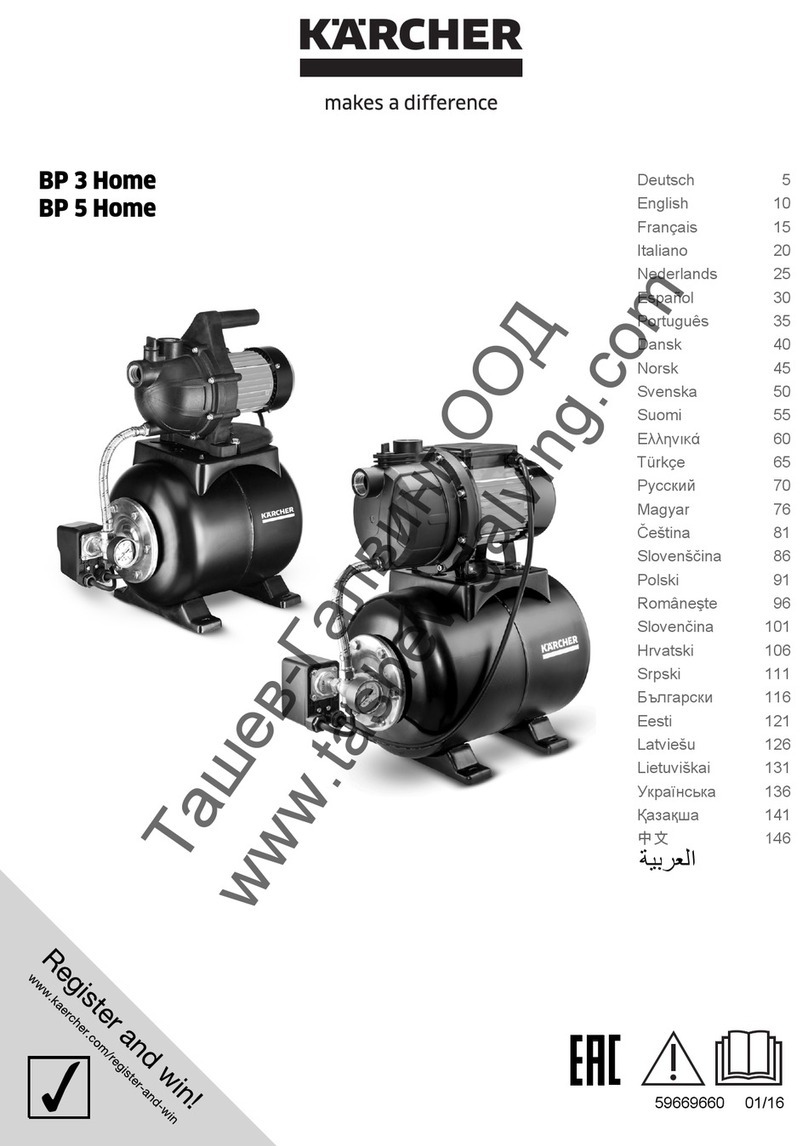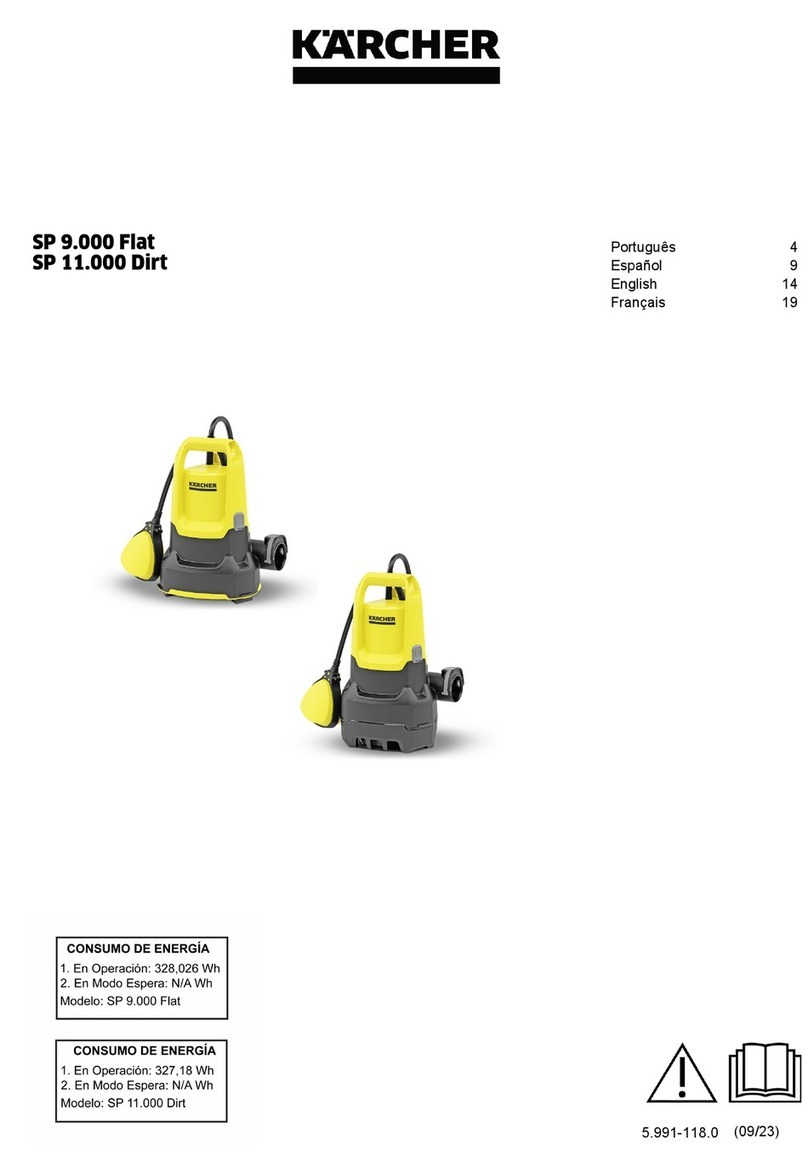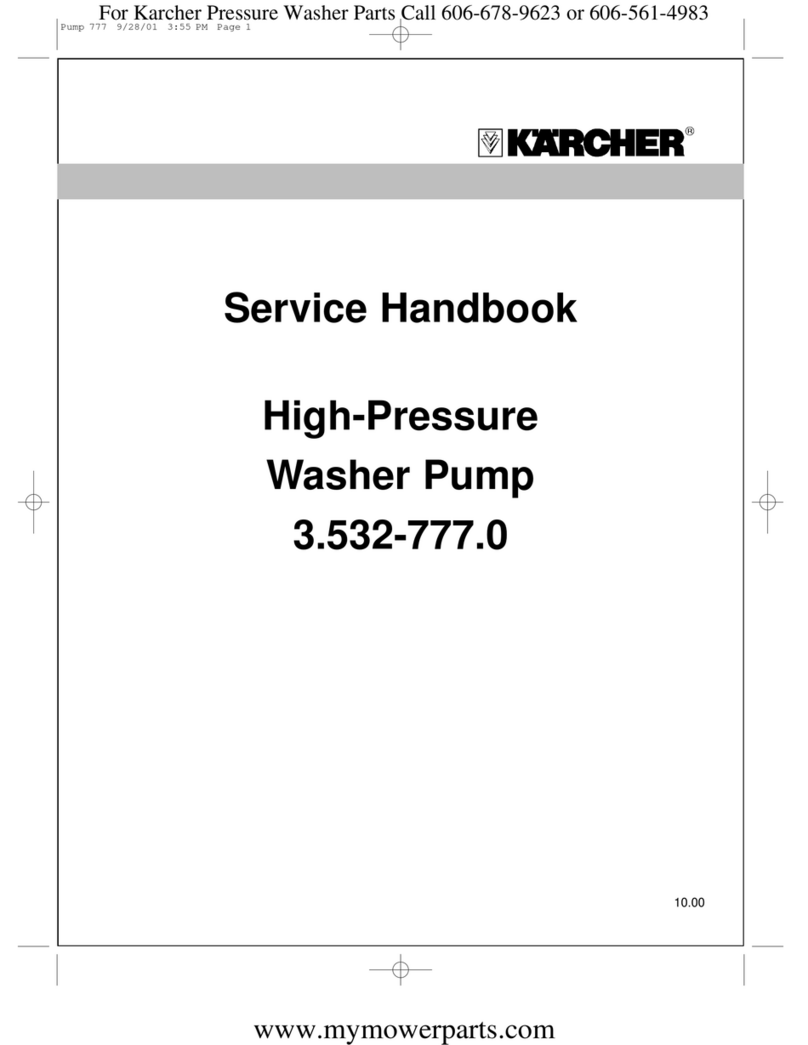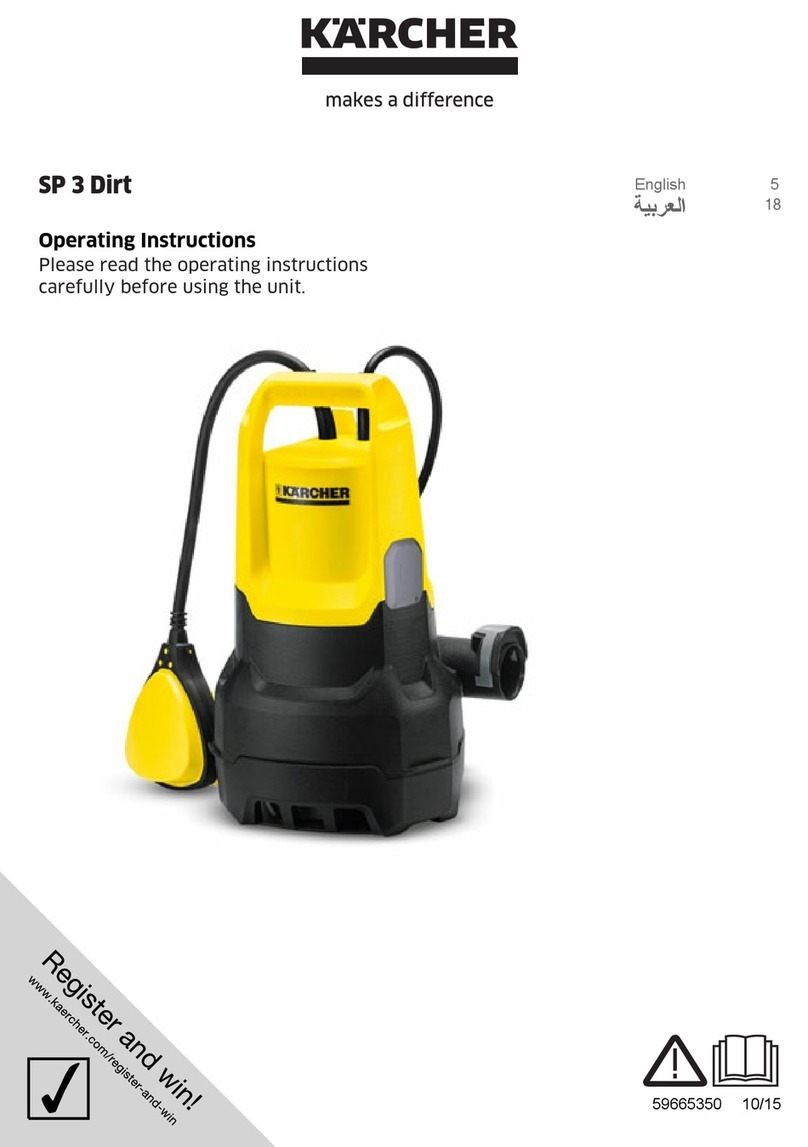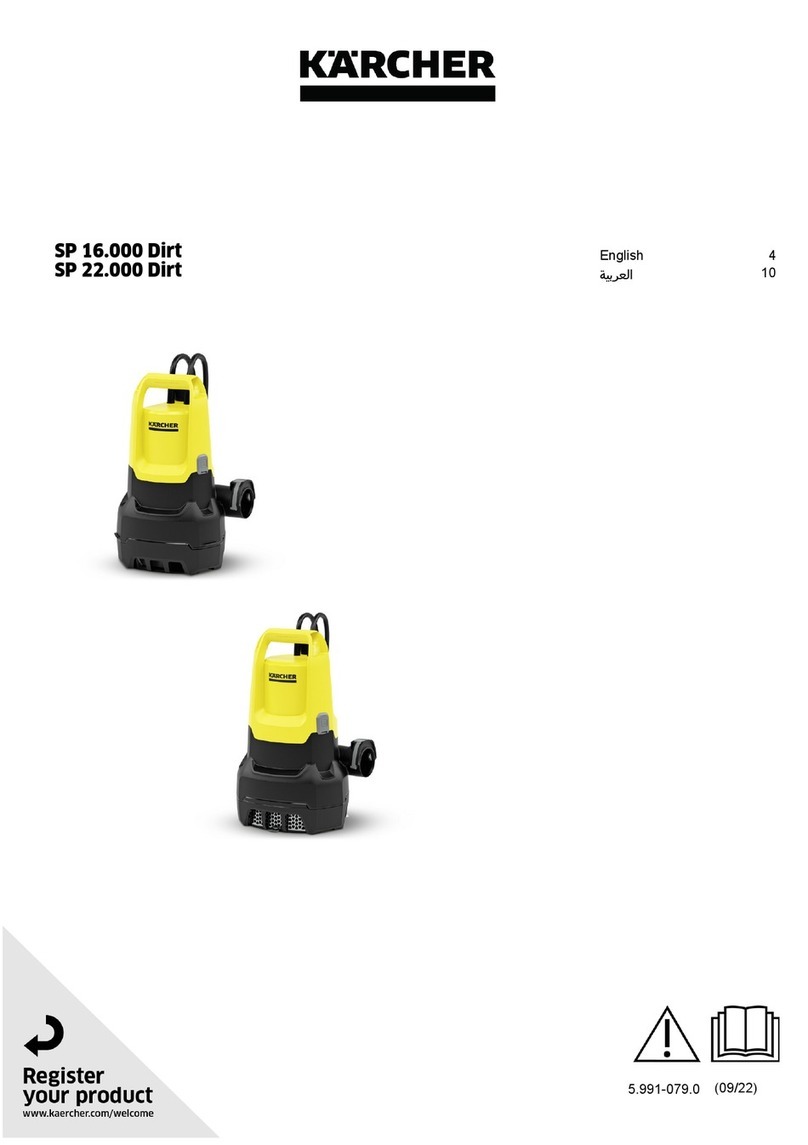
– 2
Please observe the requirements of EN 1717 when con-
necting this product to the drinking water network and
contact your sanitation specialists if you have any ques-
tions.
Please follow the safety instructions before starting up
the pump!
With the ON/OFF switch the following three operating
conditions can be switched:
In the automatic mode the house & garden pumps auto-
matically maintain the pressure in the system. If the
pressure falls below approx. 0.13 MPa (1.3 bar), the
pump is started. The pump is running as long as the flow
rate
> is approx. 60 l/h. If the withdrawal of water is complet-
ed, the pump goes into the stand-by mode after a short
stopping time. The system is now under pressure. In
case of water withdrawal and the resulting loss of pres-
sure the pump starts again.
1 Connection adapter for pumps G1
2 Connection G1 (33.3 mm) suction pipe (inlet)
3 Filling nozzle
4 Pre-filter and integrated check valve
5 Cover
6 2-way connection adapter for pumps G1
7 Connection G1 (33.3 mm) delivery line (output)
8 ON/OFF switch
9 Cable storage and mains cable with plug
10 Cable clip
11 Error display
A Error on suction side
B Error on delivery side
Illustration
Screw the connection adapter in the suction con-
nection of the pump (inlet).
Tighten manually.
Connect the vacuum-proof suction hose.
Note
In order to reduce the time required for suction to start
again, use a suction hose that is equipped with a back-
flow stop. This prevents the emptying of the suction
hose after use (see accessories).
Do not install the backflow stop directly on the pump
(suction or delivery side).
If sandy water is to be delivered, we strongly recom-
mend the use of an additional pre-filter (see optional ac-
cessories). Please install this filter on the suction side of
the pump, between the suction hose and the pump.
Please use original Kärcher suction pipes, filter compo-
nents and hose connections. When using components
of other manufacturers, malfunctions during drawing in
the delivery fluid may arise, especially when using bay-
onet connection systems.
Do not use quick couplings, but screwed connections
with domestic or permanent installations.
Illustration
Screw the connection adapter in the delivery con-
nection of the pump (outlet).
Tighten manually.
Connect delivery line.
Illustration
The 2-way adapter allows the simultaneous operation of
two appliances (e.g. washing machine or sprinkler). It
can be mounted in a way that either both outlets are
used at the side or one outlet at the side and one outlet
at the top. If only one outlet is used, the outlet that is not
required can be closed by means of the accompanying
closing cap.
Illustration
Unscrew the lid of the filler neck and fill in water up
to the brim.
Manually screw the lid all the way to the stop on the
filler neck.
Open existing shutoff valves in the pressure pipe.
Note
Even the smallest of leakage leads to malfunctioning.
With a permanent installation the pump can be screwed
onto a suitable surface.
Illustration
Pull out and turn the rubber feet on both sides of the
casing.
Reinsert the rubber feed into the casing.
Use suitable screws to screw it onto a level surface.
In case of a permanent installation the installation of a
flexible component such as a flexible pressure compen-
sating hose (see optional accessories) on the pressure
side is recommended. This has the following benefits:
More flexibility during set-up and installation.
Noise reduction, as no vibrations are transferred to
pipes in the domestic water system.
In case of small leaks, the pump does not switch as
often.
Note
To facilitate subsequent emptying and pressure release
of the system, we recommend the installation of a stop-
cock between pump and pressure line.
(not included in delivery)
By closing the shut-off valve when emptying the pump
you can prevent water from escaping from the pressure
line.
If there are increased drops in pressure due to leaks in
the house system (pump regularly switches on without
dispensing water), install a pressure equalization con-
tainer.
Connection to the public drinking water
network
Safety instructions
Operation
Settings
Switch position I/On
Continuous operation
Switch position 0/Off
Off
Switch position Auto
Automatic mode
System operation
Description of the Appliance
Preparing the Appliance
Permanent installation

